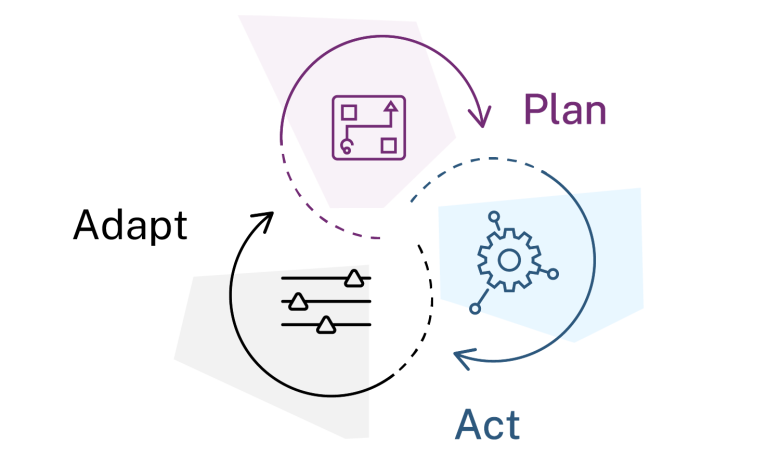Introduction
The AI Impact Navigator Framework is designed to help companies measure and improve their AI impact across 4 key dimensions. Each dimension contains 5 indicators, providing a comprehensive view of a company's AI initiatives.
Companies assess themselves against these indicators using a survey. This assessment should ideally involve a diverse, cross‑functional group of stakeholders, including internal teams and possibly external advisors, to provide a well‑rounded perspective on performance.
Rating scale
Companies rate themselves on a 5‑point scale, from ‘poor’ to ‘excellent’. The primary differences between these ratings are based on the company’s understanding, delivery, and measurement of AI impact. To achieve an ‘excellent' rating, companies must publicly report their AI impact and have it independently verified.
Guidance and measures
To assist with self‑assessment, the framework includes guidance questions. These prompts help stakeholder groups start discussions and analyse the key aspects of each indicator. Additionally, each indicator is supported by example measures that companies can adopt to track their progress. Companies are encouraged to develop custom measures that best suit their unique context and needs.
Plan, Act, Adapt cycle
The framework promotes a continuous improvement cycle known as Plan, Act, Adapt. Companies should revisit the survey regularly (e.g., quarterly), update their reporting on each indicator, and discuss the actions and initiatives undertaken to drive change. The focus is not just on the measurements themselves but on the insights gained and the proactive steps taken to enhance AI impact.
Implementation Plan
The Implementation Plan summarises how your initiative or project will lead to a positive impact. It describes the basic steps and helps identify what you need to measure to demonstrate changes. This plan is integral to ensuring that the actions taken are aligned with the overall goals and that the impact can be effectively tracked and communicated.
Impact Story
The Impact Story captures your company’s impact as it is now, so you can share it with stakeholders, peers and reporting bodies. Writing your Impact Story is a chance for you to keep a record of how your impact evolves over time, and an opportunity to create and maintain transparency about how your AI use is impacting key players around your company.
Key points
- Self‑assessment: Conducted with diverse stakeholder input.
- 5‑point rating scale: From ‘poor’ to ‘excellent’, emphasising understanding, delivery, and measurement. Public Reporting and Verification is required for an ‘excellent’ rating.
- Guidance questions: Facilitate discussion and deeper analysis.
- Example measures: Provide a starting point for tracking progress. Custom measures are encouraged for company‑specific insights.
- Continuous improvement: Regular updates and discussions to drive ongoing enhancement.
To use the Navigator, you’ll need to follow 3 steps. Your company will need to decide on your areas of priority, and how best to meet those needs.

